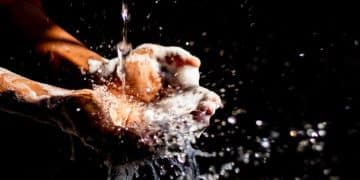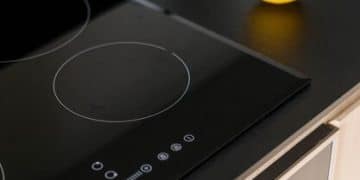Water Conservation Tips: Save Up to 20% on Your Water Bill This Year
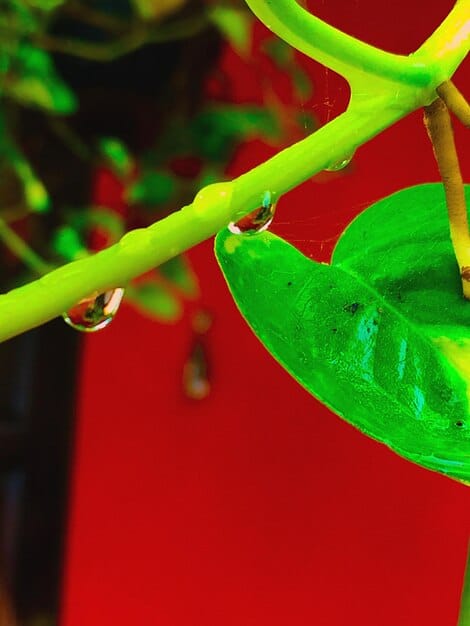
Adopting mindful water usage habits and implementing water-efficient technologies are pivotal strategies that can collectively lead to substantial reductions in household water consumption, directly translating to savings of up to 20% on your annual water bill, while simultaneously contributing to broader environmental sustainability efforts.
In an era where sustainability is not just a buzzword but a necessity, discerning how to effectively manage our resources becomes paramount. Among the most vital of these is water. For many households, rising utility costs are a constant concern, and the portion attributable to water consumption often presents a significant opportunity for reduction. This article delves into practical, actionable water conservation tips: save up to 20% on your water bill this year, demonstrating that small changes can yield substantial financial and environmental benefits.
Understanding Your Water Footprint
Before diving into specific conservation methods, it’s crucial to understand what constitutes your household’s water footprint. This involves recognizing where and how water is consumed within your home, from daily routines to occasional uses. Identifying these primary areas allows for more targeted and effective conservation efforts.
Many people underestimate the sheer volume of water used in everyday activities. Showers, toilet flushes, laundry, dishwashing, and outdoor irrigation are typically the biggest culprits. By gaining clarity on your consumption patterns, you can begin to pinpoint areas ripe for improvement. This initial assessment acts as a diagnostic tool, revealing hidden leaks or inefficient appliances that silently inflate your water bill.
Indoor Water Usage Breakdown
Indoor water usage accounts for the vast majority of residential consumption. Understanding the typical breakdown can be quite revealing:
- 🚽 Toilets: Often the largest indoor water user, especially older models.
- 🚿 Showers and Baths: Frequent and lengthy showers contribute significantly.
- 🧺 Laundry: Washing machines, particularly traditional top-loaders, can be very water-intensive.
- 🍽️ Dishwashing: Handwashing dishes under a running tap or inefficient dishwashers.
Every drip and flush adds up, turning what seems like a minor inconvenience into a significant drain on both resources and finances. Modern appliances and fixtures are designed with water efficiency in mind, offering substantial upgrades over their older counterparts. Investing in these can provide long-term savings that far outweigh the initial expenditure, contributing to a more sustainable household overall.
Recognizing the primary areas of water consumption is the first step towards effective conservation. By shifting perspective from passive consumption to active management, homeowners can begin to implement changes that save water and money simultaneously. This proactive approach not only benefits your wallet but also supports community-wide water sustainability efforts, ensuring this vital resource is available for future generations.
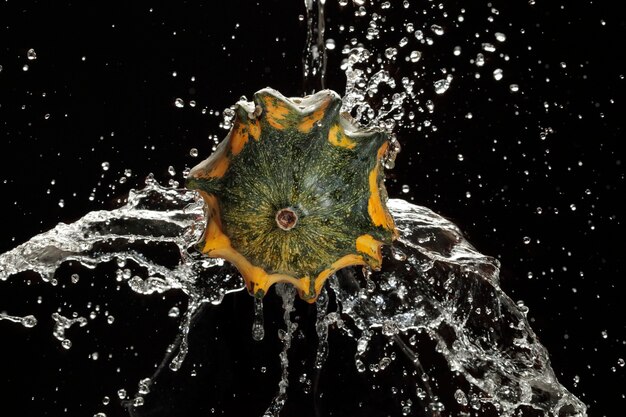
Smart Strategies for Bathroom Water Savings
The bathroom is arguably the most water-intensive room in any home. From daily hygiene routines to the occasional long soak, an astonishing amount of water flows down the drain here. Implementing smart strategies in this area can lead to significant reductions in your overall water consumption and, consequently, your water bill. It’s about being mindful of habits and upgrading to more efficient fixtures.
Even seemingly small changes can collectively make a big difference. Think about the cumulative effect of turning off the tap while brushing your teeth, taking shorter showers, or fixing a leaky toilet. These actions, when adopted consistently, transform wasteful practices into efficient routines, fostering a greater appreciation for water as a finite resource.
Quick Bathroom Upgrades and Habits
There are several immediate steps you can take to make your bathroom more water-efficient:
- 💧 Install low-flow showerheads: These reduce water flow without sacrificing pressure.
- 🚽 Check for toilet leaks: A running toilet can waste hundreds of gallons per day.
- 🦷 Turn off the tap: While brushing teeth or shaving, avoid letting water run unnecessarily.
- ⏱️ Shorter showers: Aim for 5-minute showers instead of long, drawn-out ones.
These simple adjustments are often overlooked but carry considerable weight in the grand scheme of water conservation. They require minimal effort or investment but yield substantial returns in terms of water savings. Modern bathroom fixtures are increasingly designed with water efficiency as a core principle, making it easier than ever to conserve without compromising on comfort or convenience. For instance, dual-flush toilets offer an option for liquid or solid waste, using less water for the former.
Understanding the impact of everyday bathroom habits empowers individuals to make conscious choices that benefit both their finances and the environment. It’s an ongoing process of assessment and adjustment, continually seeking ways to optimize water use within this critical space. By prioritizing water efficiency in the bathroom, homeowners embark on a path towards significant savings and greater ecological responsibility.
Kitchen Conservation: Beyond Just Washing Dishes
The kitchen, a hub of daily activity, presents numerous opportunities for water conservation that extend far beyond simply washing dishes. From preparing meals to brewing coffee, water is an integral part of nearly every kitchen task. Adopting a more water-conscious approach in this area can significantly contribute to reducing your household’s overall water footprint.
Many common kitchen habits often lead to unnecessary water waste. Leaving the tap running while scrubbing vegetables, defrosting food under running water, or using excessive amounts of water for cooking are just a few examples. By becoming aware of these pitfalls, you can start implementing smarter strategies that save water without compromising convenience or hygiene.
Efficient Kitchen Practices and Appliances
Here are practical tips for conserving water in the kitchen:
- 🧼 Use a dishwasher efficiently: Run it only when full, and consider skipping the pre-rinse for most modern dishwashers.
- 🍎 Wash fruits and vegetables in a basin: Instead of under a running tap, use a bowl of water.
- 🧊 Defrost food in the refrigerator: Avoid using running hot water, which is wasteful.
- 💧 Fix leaky faucets: A constant drip can waste gallons of water over time.
Beyond behavioral changes, the right appliances can make a substantial difference. Energy-efficient dishwashers, for example, use significantly less water than older models and often outperform handwashing in terms of water usage. When replacing kitchen appliances, look for the Energy Star label, which indicates superior water efficiency. Small adjustments, like collecting cold water while waiting for the tap to heat up for other uses, can also add up. This collected water can be used for watering plants or rinsing dishes.
Effective kitchen conservation is about cultivating a mindset of efficiency and mindfulness. It involves a combination of smart habits and strategic appliance choices. By taking these steps, you not only reduce your water bill but also minimize your environmental impact, contributing to a more sustainable lifestyle. The kitchen becomes a testament to how practical daily choices can significantly influence resource conservation.
Outdoor Water Management: Landscapes and Leisure
Outdoor water usage, particularly for landscapes, can account for a substantial portion of a household’s total consumption, especially in regions with dry climates or during warmer months. Efficient outdoor water management is crucial not only for saving money but also for ensuring sustainable practices within your community. This involves smart irrigation, appropriate plant choices, and mindful leisure activities.
Many homeowners overwater their lawns and gardens, leading to runoff and wasted resources. Understanding the specific needs of your plants and adapting your watering schedule accordingly are key. Beyond gardening, activities like washing cars or filling swimming pools also contribute to outdoor water consumption and require careful consideration for efficiency.
Strategies for Water-Wise Landscaping
Implementing water-wise landscaping, often referred to as xeriscaping, can dramatically reduce your outdoor water needs:
- 🌵 Choose drought-tolerant plants: Opt for native species or plants that thrive with minimal water.
- 🌧️ Install a rain barrel: Collect rainwater for use in your garden.
- ⏱️ Water wisely: Irrigate in the early morning or late evening to minimize evaporation.
- 🌿 Use mulch: Apply a layer of mulch around plants to retain soil moisture.
Beyond plant selection and mulching, advanced irrigation systems can optimize water delivery. Drip irrigation systems, for instance, deliver water directly to the plant roots, minimizing waste from evaporation and runoff. Smart irrigation controllers, which adjust watering based on local weather conditions, are another valuable tool. For leisure activities, consider alternative methods for washing cars, such as using a bucket and sponge instead of a running hose.
Effective outdoor water management transforms your landscape into a sustainable and beautiful space that requires less intervention. It’s an investment in both your property and the planet, reflecting a commitment to responsible resource use. By embracing these strategies, homeowners can enjoy lush outdoor living spaces without the burden of excessive water bills or environmental guilt.
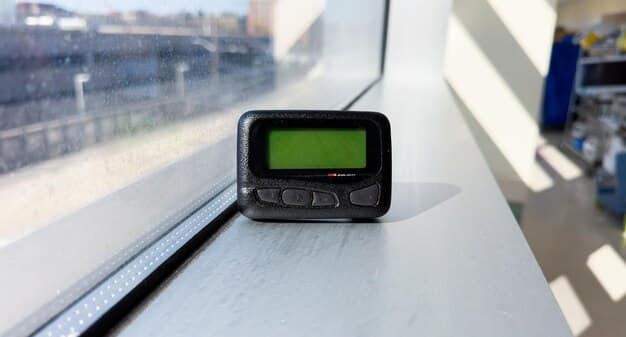
The Role of Technology in Water Conservation
In the modern era, technology plays an increasingly significant role in nearly every aspect of our lives, and water conservation is no exception. Smart devices and innovative systems are making it easier than ever for homeowners to monitor, manage, and reduce their water consumption. Leveraging these technological advancements can lead to more precise and effective conservation efforts, ultimately reducing your water bill.
From automated leak detection to intelligent irrigation systems, technology offers solutions that go beyond traditional conservation methods. These tools provide real-time data, automate complex processes, and can even learn from your habits to optimize water usage. Embracing these innovations represents a proactive approach to resource management.
Key Water-Saving Technologies
Several technological solutions are transforming water conservation in homes:
- 💧 Smart water meters: Provide real-time data on water usage and can detect leaks.
- 🚿 High-efficiency appliances: Dishwashers, washing machines, and toilets with Energy Star or WaterSense ratings.
- ☔ Smart irrigation controllers: Adjust watering schedules based on local weather and plant needs.
- 💦 Faucet aerators: Reduce water flow from faucets without compromising pressure.
Beyond these, newer innovations include shower timers that signal when you’ve reached your optimal showering duration, and smart leak detectors that can alert you via your smartphone the moment a leak is detected. Some advanced systems even have the capability to automatically shut off your main water supply if a major leak is identified, preventing costly damage. These technologies not only save water but also offer peace of mind, knowing that your home’s water system is being efficiently managed and protected.
Integrating technology into your water conservation strategy empowers you with valuable insights and automation. It shifts conservation from a manual effort to an intelligent, data-driven process. By investing in these smart solutions, homeowners can achieve a new level of efficiency, leading to significant long-term savings and a substantial positive impact on global water resources.
Addressing Leaks: The Silent Water Wastage
Leaks are often the unseen culprit behind soaring water bills and unnecessary water waste. A tiny, continuous drip can amount to hundreds, even thousands, of gallons lost each year, making leak detection and repair a critical component of any comprehensive water conservation strategy. Many homeowners overlook these silent wastages, assuming they are insignificant, but their cumulative impact is substantial.
Identifying leaks early prevents not only water loss but also potential property damage, such as mold growth or structural issues. It’s a proactive measure that safeguards both your financial resources and the integrity of your home. Regularly checking for leaks should become a standard part of your home maintenance routine, much like checking smoke detector batteries.
Common Leak Hotspots and Detection Methods
Knowing where to look for leaks is the first step:
- 🚽 Toilets: Often leak silently into the bowl. Test by adding food coloring to the tank and waiting 15 minutes.
- faucets: Even a slow drip can waste gallons daily.
- 🚿 Showerheads: Check for drips when the shower is off.
- ⛲ Outdoor spigots and irrigation systems: Inspect hoses, connections, and sprinkler heads.
Beyond these common areas, don’t forget to check your water meter. If your meter is running when no water is being used in the house, it’s a strong indication of an undetected leak somewhere in your system. Professional plumbers can also conduct pressure tests and use specialized equipment to locate hard-to-find leaks behind walls or underground. Prompt attention to even minor leaks can result in significant savings over time. Furthermore, understanding the nuances of your home’s plumbing system can facilitate more efficient self-diagnosis and timely repairs, preventing minor issues from escalating into major problems.
Addressing leaks is perhaps one of the most straightforward and impactful ways to conserve water. It’s about being vigilant and proactive in maintaining your plumbing system. By diligently detecting and repairing leaks, you actively prevent valuable water from going to waste, directly contributing to a healthier budget and a more sustainable environment. This diligence truly pays off, both financially and ecologically.
Cultivating a Water-Saving Mindset
Ultimately, true water conservation extends beyond installing smart devices or fixing leaks; it involves cultivating a water-saving mindset. This paradigm shift means consciously valuing water as a precious resource and integrating water-efficient practices into daily life. It’s about recognizing that every drop counts and that individual actions, however small, contribute to a larger communal effort.
A water-saving mindset is not about deprivation but about efficiency and mindfulness. It encourages innovation in how we use water, prompting us to seek creative solutions for common tasks. This cultural shift begins at home, influencing household members to adopt new habits and become advocates for water stewardship in their communities.
Integrating Conservation into Daily Routines
Practical ways to embed a water-saving mindset include:
- 🧠 Conscious consumption: Always be aware of how much water you are using.
- educate children: Teach them the importance of water and simple saving tips.
- 💧 Reuse water: Collect greywater from rinsing vegetables for plants, or save cold water from the shower.
- ♻️ Support water-efficient products: Prioritize appliances and fixtures with water-saving certifications.
This mindset encourages a broader perspective on resource use, extending beyond immediate financial savings to encompass long-term environmental sustainability. It transforms mundane tasks into opportunities for conscious conservation. For example, instead of letting a faucet run while waiting for hot water, collecting that initial cold water for later use, such as watering houseplants, exemplifies this integrated approach. Such small, consistent actions reflect a deep appreciation for water and a commitment to its preservation.
Cultivating a water-saving mindset is a journey of continuous learning and adaptation. It embodies the essence of responsible living, ensuring that future generations will also have access to clean, abundant water. By embracing this philosophy, you not only reduce your water bill but also become a crucial part of a global movement towards a more sustainable and resilient future. Your daily choices, however minor they may seem, have a profound collective impact. Embracing this perspective enriches your life and contributes positively to the broader community, leading to a more resourceful and environmentally conscious society.
| Key Area | Brief Strategy |
|---|---|
| 🛁 Bathroom | Install low-flow fixtures and take shorter showers. |
| 🍳 Kitchen | Run full dishwashers and avoid running water for prep. |
| 🌳 Outdoors | Landscape with drought-tolerant plants and use smart irrigation. |
| 🛠️ Leaks | Regularly check and fix all indoor and outdoor leaks promptly. |
Frequently Asked Questions About Water Conservation
By implementing a combination of behavioral changes and appliance upgrades, an average household can realistically save between 10% and 20% on their annual water bill. More aggressive measures, such as extensive xeriscaping or replacing all inefficient fixtures, can lead to even greater savings, sometimes exceeding 30%.
Water-saving devices, particularly those with WaterSense or Energy Star certifications, are highly effective. Low-flow showerheads, high-efficiency toilets, and smart irrigation controllers are scientifically designed to reduce water consumption without compromising performance. Their impact is quantifiable and verified by independent testing.
One of the easiest and most impactful tips is to fix any leaky faucets or toilets. A continuous drip can waste gallons of water daily, adding up significantly over time. Checking for and repairing leaks is often a quick fix that yields immediate and noticeable savings on your water bill.
Yes, outdoor landscaping, particularly traditional lawns and thirsty plants, can account for up to 50-70% of a household’s total water consumption, especially in arid or semi-arid regions during warm seasons. Switching to drought-tolerant plants and efficient irrigation methods can drastically reduce this usage.
Lead by example: turn off taps, take shorter showers, and use water efficiently in the kitchen. Make it a family effort by involving everyone in checking for leaks and discussing your water bill. Educational games or simple charts tracking water usage can also make it engaging for younger members.
Conclusion
Embracing water conservation is a strategic move that delivers tangible benefits, not only for your wallet but for the health of our planet. The collective impact of small, consistent changes—from fixing a leaky faucet to rethinking your landscape—can lead to significant savings on your water bill, potentially up to 20% or more. Beyond the financial advantage, these efforts contribute to a sustainable future, preserving a vital resource for generations to come. By adopting a water-saving mindset and leveraging available technologies, every household can become a part of the solution, demonstrating that responsibility and smart living go hand in hand.
